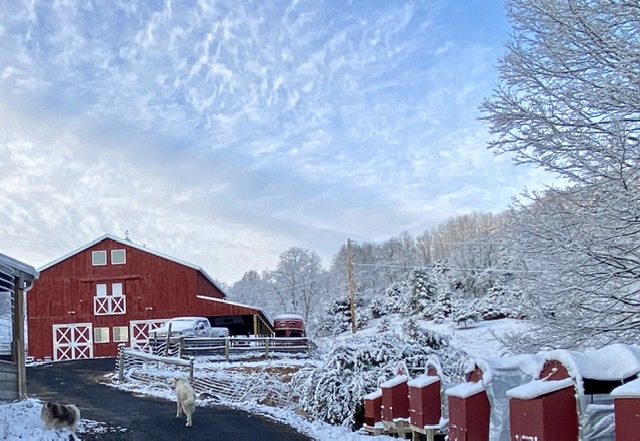
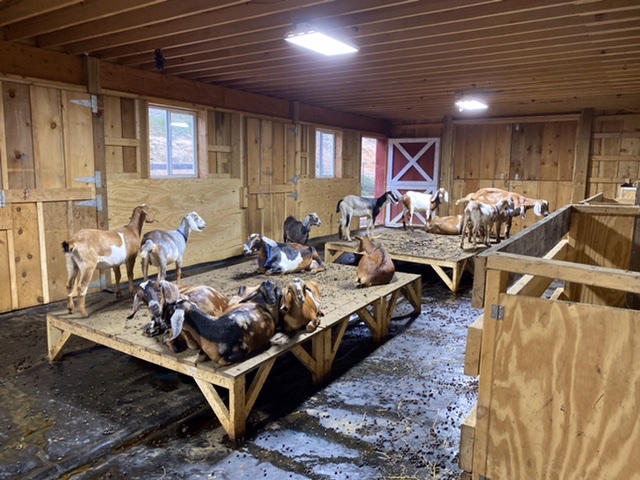
So, tomorrow is November 1. It’s starting to be freezing temperatures at night, but I’ve been tracking early morning temperatures, and they are consistently 15-20 degrees higher inside my barn than the outside temps. Of course, it’s still warming up to the 60s during the day, with lots of bright sun. So, winter isn’t really here—yet!
If you follow this blog, you know that I had planned to have my girls on bare tables this winter. The reasoning was that pee would go down through (which it does) and I could clean off poo each day (which I now do) and they would be fine. The photo at the right is first thing each morning. Here’s where I detail the table construction.
Last winter was a mild one, and I used the kiddie pools, which worked well for warmth, but were difficult to clean out in the dead of winter. (I had to clean them out because pee was trapped in them and they became heavy and yucky within 10-14 days.) I have a friend in PA, though, who used bare tables for her does and had no problems last winter. BUT: it was a mild winter there, too. I wanted less heavy lifting in bad weather this year, so I decided to follow my PA friend’s lead, but wasn’t entirely sanguine about this plan. I had given myself the option of hanging radiant heaters over the tables, but upon pricing them, found them well out of our budget. So, I was unsettled.
The Dilemma
Then recently, a good and kind neighbor of mine (with a lot more experience with goats than me) had me come over and look at her barn, and talked to me about the benefits of deep litter. She had seen my blog posts and she believed that my goats would suffer from being on bare tables—that they would be cold and possibly get arthritis over time. I went away from our conversation thoughtful, and then prayed about her advice.
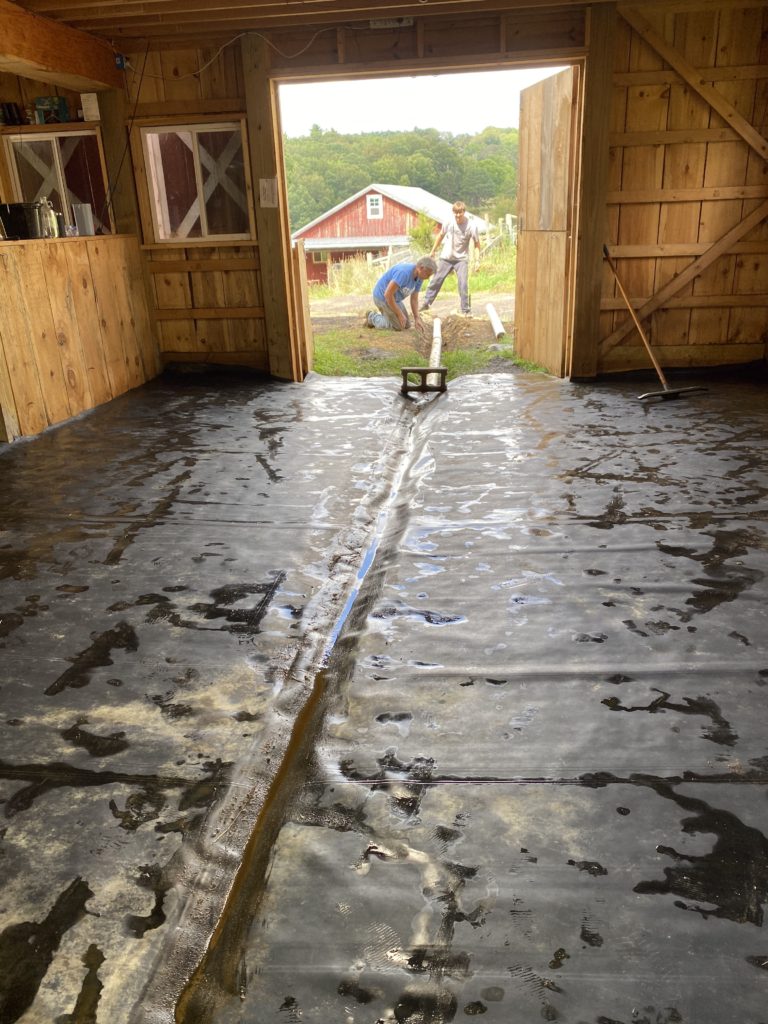
Now, I knew about deep litter before my neighbor spoke to me. We successfully use it with our chickens. But with goats, I do not like bare dirt floors. Been there, done that. We have clay for dirt, and the pee puddles as if the goats were on cement. And, I do not like cleaning out deep litter from mammals. In fact, my barn is designed such that if I had dirt floors, I could drive a tractor through it and clean that way (as opposed to the back breaking chore of using pitch forks and wheelbarrows). But, I chose to use rubber roofing over my clay floors instead of deep litter in winters.
I have had it for over a year, and I love this rubber because I can squeegee it daily and sluice it with water when it needs it and it gets really clean and the barn smells sweet because the pee runs out of the barn in our handy gutter. It takes less than an hour each morning to muck. I do it while my husband milks the goats.
In the picture at the right, that floor will be dry in 20 minutes or less.
BUT: I would not want my goats sleeping on the bare rubber floor. While the tables’ wood gave a decent R factor of insulation, the rubber on dirt has none of that. And then there was the cold air underneath the tables. Would they insulate the goats enough, being elevated? My neighbor’s advice kept rattling around in my head and heart, and I felt like I should heed it, but I didn’t want to give up that rubber floor!
My Solution
Deep litter boxes (instead of pools or bunks—the new experiment!)
After much thought and prayer, I had an idea. I decided to turn my tables upside down for the winter, building plywood sides that would keep hay in for bedding. This is similar to kiddie pools, but the cracks in the tables‘s boards allow pee to run out under the box, down the sloped rubber floor, and into the pee gutter that I now like and use.
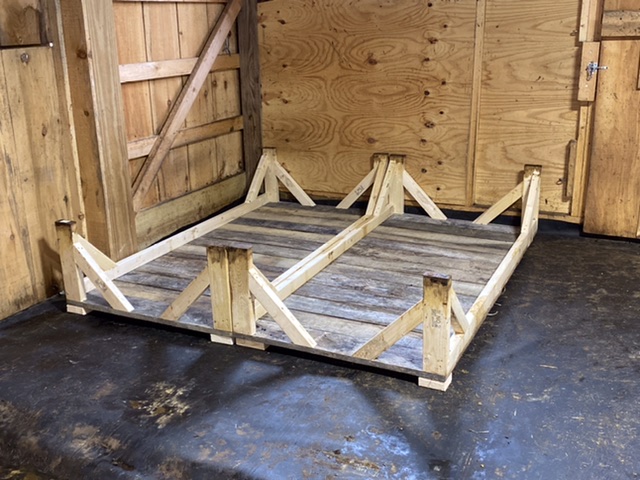
The plan is to put a light topping of bedding over the poo each morning (deep litter) but not (as with pools) to put absorbent pellets in the bottom to trap the pee. Because the tables are rigid, we can simply elevate them over the sloped rubber floor. Note that we put blocks under the downhill side (front in these pictures) so that pee can run out from under the beds.
Construction step 1 is pictured at the left. Steps 2 and 3 (building plywood sides and then filling them with bedding) are below.
These plywood sides may stay on, becoming aprons after I flip them again in spring (to keep little kids out from under them) or we may just remove them. We’ll see!
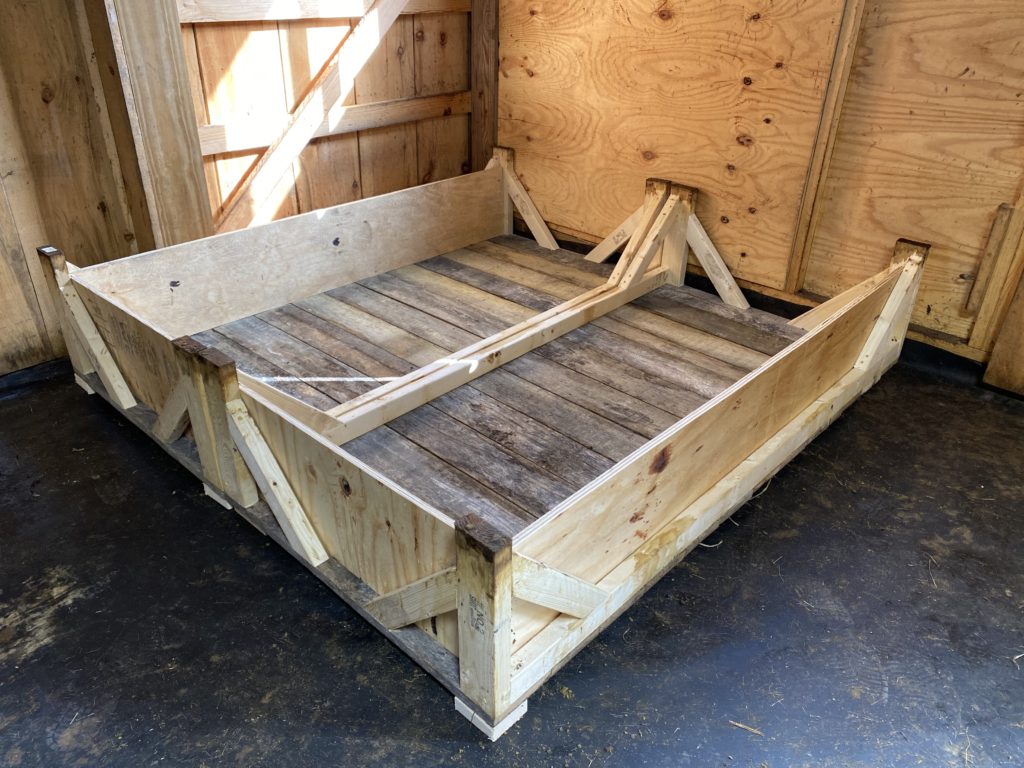
With sides attached… bunks are still separate. 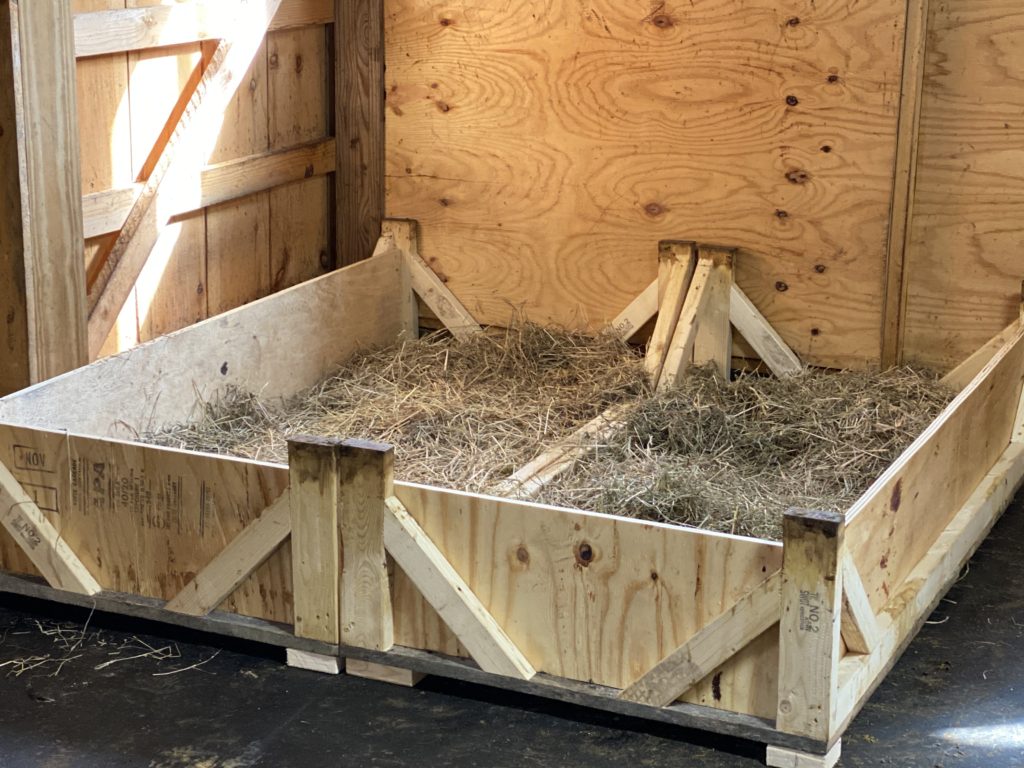
With hay on the bottom. Cozy!
So, this was our prototype. We built it in an hour yesterday, and then waiting to see how the does would vote with their hooves! Where would they choose to sleep? Bare tables or deep litter boxes?
Spoiler alert! This prototype “litter box” was a tremendous hit. The left picture below shows mother and daughter exploring the possibilities before lights out last night. The one on the right was taken on our barn cam at 6:15 AM. There were 9 does in the box right before I snapped this picture, 2 does on the bare benches nearby, and one on the rubber floor next to the box. Clearly, the does had shown their preference, and my neighbor was correct.
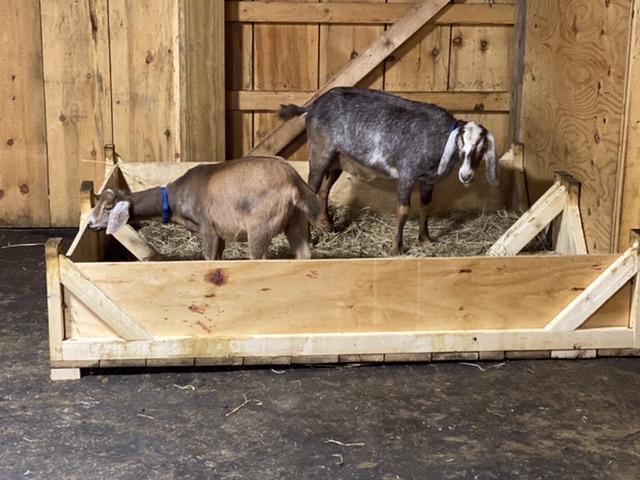
Bluebelle and Briar Rose exploring last night. 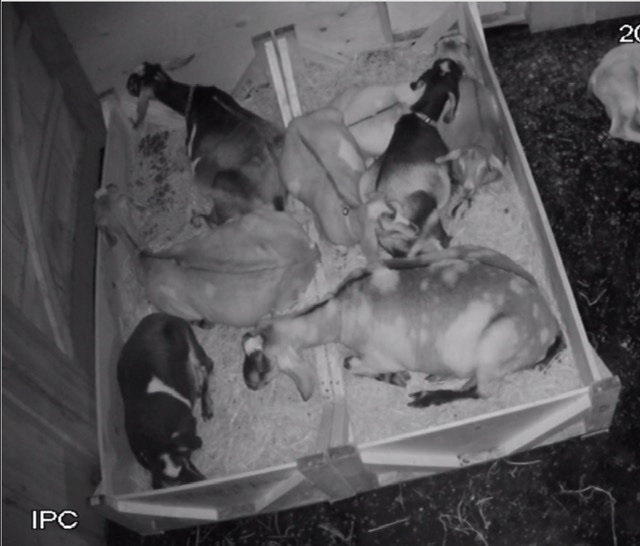
6:15 AM There were 9 in here just a minute ago!
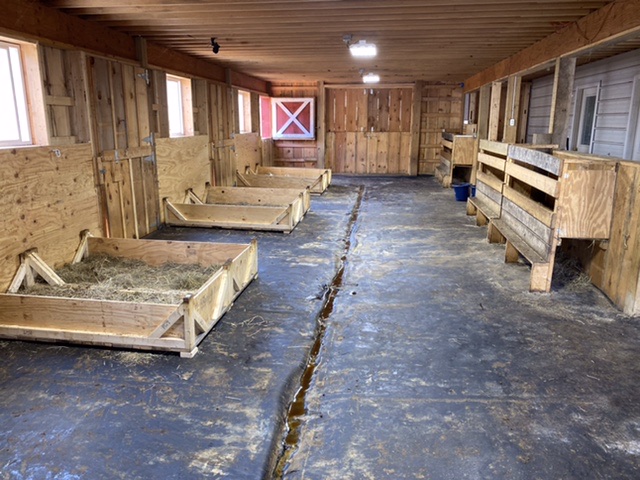
So, this morning, my husband and I spent a couple of hours sawing up plywood pieces and repositioning the tables—upside down.
(Can I say again how MUCH I love modular solutions? SO glad that we didn’t build them into walls or build stalls in this barn!) These “litter boxes” aren’t screwed together; they are heavy enough that they stay put without it.
This is how it looked when I’d finished screwing the plywood sides in place, and putting in bedding.
Just a few quick notes below, and then I’m done.
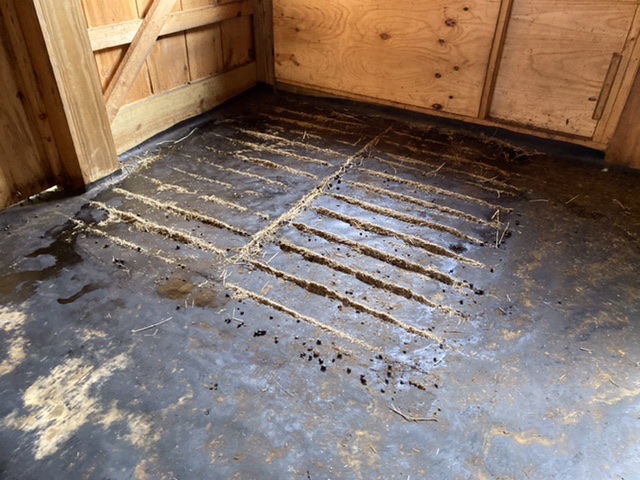
One thing I quickly realized this morning was that we’d made an oops putting the trial bunk (pictured up above) in that corner. The problem is that this is where our kidding stalls will be erected in late January, and I’m hoping to not have to move these litter boxes until early spring. So we moved the trial box to become the closest of the three pictured right above.
When we moved that trial box, I saw that if I used hay that I cleaned out of the bottom of our mangers, it would have lots of fine “hay dust” that will sift down under the box during the night. Because I don’t want to impede the flow of pee out from under these boxes, I made sure to use our round bale bedding hay, which is more like straw, rather than use waste hay from our mangers.
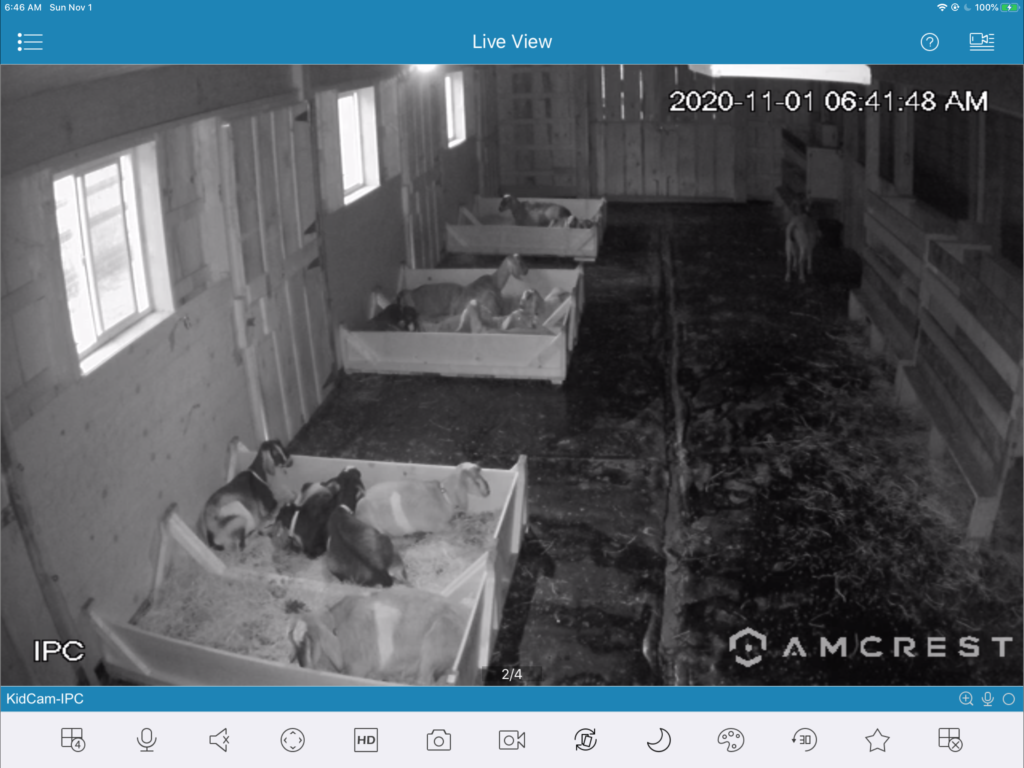
And here they were on November 1, looking so cozy. Makes my heart happy!